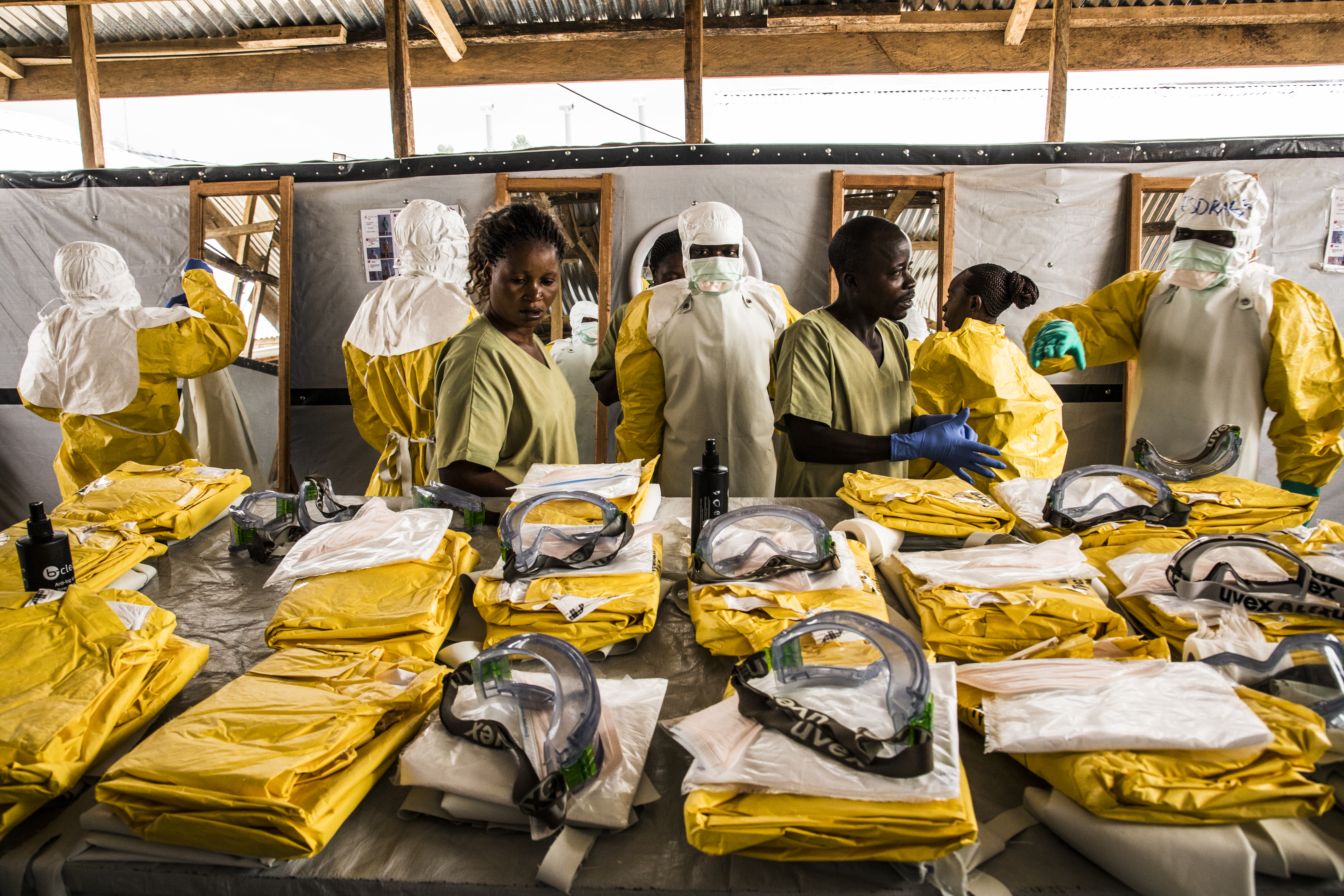WHO says Ebola outbreak still not an international health emergency

For the second time in 6 months, an emergency committee convened by WHO voted against declaring the Ebola virus outbreak in the Democratic Republic of the Congo, or DRC, an international public health emergency.
Committee chairman Robert Steffen, MD, said members voted almost unanimously not to declare a public health emergency of international concern (PHEIC) despite a concern about the duration of the outbreak, now into its ninth month, and a recent spike in the number of cases to over 1,200.
Steffen argued that there would no “no added benefit” of declaring a PHEIC, “particularly as excellent work is being done on the ground by WHO and many partner organizations.” As he did in October when the committee also voted against declaring a PHEIC, Steffen indicated that the No. 1 reason for not doing so is that the outbreak has not spread beyond the DRC.
“If it stays within a country, by definition it’s not of international concern because it has not spread,” Steffen said. “It may still be of concern if it shows a very dramatic spread over thousands of kilometers, but in this outbreak, it has been limited to the two provinces [of North Kivu and Ituri]. Therefore, and particularly because we also felt that declaring a PHEIC would not aid the situation — it might even complicate it — we almost unanimously decided that this is not a PHEIC.”

WHO Director-General Tedros Adhanom Ghebreyesus, PHD, MSc, accepted the decision, saying that not declaring a PHEIC “makes no difference” in their current ability to fight the outbreak.
However, Tedros again warned that the response remains grossly underfunded. He said an additional $104 million is needed to reach a funding goal of $178 million to pay for the response through the end of July and asked that the international community step up its commitments.
The estimate went up by $30 million since the last time Tedros spoke of the funding gap last month. The additional costs include repairing treatment facilities that have been burned down, he said.
“Stopping this outbreak is our collective responsibility,” he said.
Tedros again said he does not convene emergency committees with an eye toward raising needed funds, saying that fundraising is “not the purpose” of such meetings or of PHEICs. He said he convened this latest meeting because of the spike in cases.
In the 29 days since his last news conference on the outbreak, on March 14, there have been 270 more reported cases — more than 22% of the 1,206 confirmed or probable cases now reported in the outbreak, which includes 764 deaths.
Tedros has said that ongoing violence being perpetrated by armed militia groups threatens to reverse any gains that have been made in the outbreak. The violence has included attacks on Ebola treatment facilities, including one last month at a facility that was visited just hours later by Tedros and CDC Director Robert Redfield, MD.
Fearing cross-border spread, other countries have begun vaccinating health care and front-line workers with Merck’s experimental V920 vaccine — first Uganda, then South Sudan and, starting this week, Rwanda.
In the DRC, almost 98,000 people have received the vaccine. No data are available yet on how effective it has been in preventing infection or death in recipients, but Ebola expert Mike Ryan, MD, MPH, who heads WHO’s health emergency program, said that some data would be publicly available “extremely shortly.”
“What I can say is the vaccine is demonstrating remarkable efficacy against infection,” Ryan said.
The vaccine is being administered on a voluntary basis to contacts — and contacts of contacts — of confirmed Ebola patients as part of a ring trial. But Ryan said that around 10% of contacts have not accepted vaccination, hindering control efforts.
Last month, as an example of how some communities have become more responsive, Tedros noted that residents of two hard-hit towns are increasingly open to allowing qualified burial teams to bury the bodies of Ebola victims, who remain highly infectious after they die, to prevent further transmission.
But there are indications that misinformation and mistrust, which WHO has noted are contributing to a reluctance in some populations to cooperate with the response, remain critical issues, including a recent report that 25% of respondents in a survey in the DRC believe Ebola is not real. – by Gerard Gallagher
Disclosures: Steffen and Tedros report no relevant financial disclosures.


